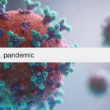Introduction
Maintaining good oral health is essential for overall well-being, and dental disease prevention plays a crucial role in achieving it. Dental diseases, including periodontal diseases and oral cancers, can have a significant impact on one’s quality of life. Fortunately, with proper education, preventive measures, and initiatives, we can control and prevent these dental issues effectively. In this comprehensive guide, we will explore the importance of dental disease prevention, common dental diseases, and strategies to maintain a healthy smile.
The Significance of Dental Disease Prevention
Protecting Your Overall Health
Your dental health is closely connected to your overall health. Studies have shown that poor oral health can lead to various systemic diseases, including heart disease, diabetes, and respiratory problems. By preventing dental diseases, you not only safeguard your teeth and gums but also reduce the risk of developing more severe health issues.
Public Health Initiatives
Public health centers and organizations play a pivotal role in disease control and prevention. They are responsible for implementing quality initiatives aimed at educating the public about dental disease prevention. The Centers for Disease Control and Prevention (CDC), for instance, work tirelessly to promote oral health and reduce dental diseases through their extensive education campaigns.
Common Dental Diseases
Periodontal Disease
What is Periodontal Disease?
Periodontal disease, commonly known as gum disease, is a prevalent dental issue. It occurs when bacteria in dental plaque infect the gums, leading to inflammation, bleeding, swollen gums, and even tooth loss if left untreated. Periodontal disease can progress to a severe condition called periodontitis, which can have long-term consequences if not controlled.
Prevention and Treatment
Preventing periodontal disease involves maintaining excellent oral hygiene practices. Regular brushing, flossing, and routine dental check-ups are key. In cases of advanced periodontitis, a dentist may recommend scaling and root planing to remove tartar and infected tissue, effectively treating the disease.
Oral Cancer
Understanding Oral Cancer
Oral cancer is another critical concern in dental health. It can affect the lips, tongue, cheeks, and throat. Early detection is crucial for successful treatment. Symptoms of oral cancer include persistent mouth sores, difficulty swallowing, and unusual changes in the mouth’s appearance.
Prevention and Treatment
Regular oral cancer screenings during dental check-ups are essential for early detection. Lifestyle choices also play a significant role in prevention. Avoiding tobacco products and excessive alcohol consumption can significantly reduce the risk of developing oral cancer. If detected in its early stages, oral cancer is more treatable, highlighting the importance of regular dental visits.
Strategies for Dental Disease Prevention
Maintaining Excellent Oral Hygiene
Prevention starts with daily oral hygiene practices. Brushing your teeth twice a day with fluoride toothpaste, flossing daily to remove plaque and food particles between teeth, and using an antimicrobial mouthwash can help keep your teeth and gums healthy.
A Balanced Diet
Your diet plays a vital role in dental disease prevention. Consuming a diet rich in fruits, vegetables, and dairy products provides essential nutrients for strong teeth. Limit sugary snacks and acidic beverages, as they can contribute to tooth decay and gum disease.
Regular Dental Check-ups
Visiting your dentist regularly is crucial for preventive care. Dental professionals can detect and address dental issues early, preventing them from progressing into more severe conditions. They can also provide valuable education on proper oral hygiene techniques.
Public Health Initiatives
Public health centers, in collaboration with dental professionals, play a pivotal role in educating the public about dental disease prevention. They organize health promotion campaigns and educational initiatives to raise awareness about the importance of oral health.
Quality Oral Health Education
Quality education is fundamental to dental disease prevention. Dental health professionals and public health organizations should work together to provide accurate information and resources to the public. Proper education empowers individuals to take control of their oral health.
Taking Control of Your Dental Health
Preventing dental diseases ultimately comes down to personal responsibility. By adopting healthy habits and following recommended guidelines, individuals can reduce their risk of dental issues. Initiatives for dental disease prevention should start at home.
Community Involvement
Community-based initiatives and programs can have a significant impact on dental disease prevention. Local public health centers, in partnership with dental professionals, can organize events, workshops, and screenings to promote oral health within the community.
The Role of Centers for Disease Control and Prevention (CDC)
The CDC plays a vital role in controlling and preventing oral diseases on a national level. Through research, surveillance, and public health programs, the CDC works tirelessly to improve the oral health of the population. Their initiatives encompass a wide range of dental diseases, including periodontal disease, oral cancer, and tooth loss prevention.
Technological Advancements in Dental Disease Prevention
In recent years, there has been a growing emphasis on technological advancements in dental disease prevention. Innovations such as telemedicine for oral health consultations and the development of smart toothbrushes that monitor oral hygiene habits are shaping the future of preventive dentistry.
Dental Disease Prevention Education
Explanation: Dental disease prevention education is a critical component of maintaining optimal oral health. This aspect emphasizes the need for comprehensive education efforts aimed at individuals of all ages. Dental professionals, schools, community organizations, and healthcare providers should actively engage in educating people about proper oral hygiene practices and the importance of dental health.
Such education initiatives can include:
- Promoting Proper Oral Hygiene: Teaching individuals the correct techniques for brushing, flossing, and using mouthwash to effectively remove plaque and prevent dental diseases like tooth decay and gum disease.
- Dietary Guidance: Educating people about the impact of diet on oral health. This includes discussing the importance of reducing sugar intake, consuming foods rich in essential nutrients, and understanding how acidic foods and beverages can contribute to tooth erosion.
- Lifestyle Choices: Providing information on how lifestyle factors such as tobacco use and excessive alcohol consumption can significantly increase the risk of oral cancer and gum disease.
- Regular Dental Check-ups: Stressing the importance of routine dental check-ups for early detection and prevention of dental issues.
- Oral Health for Special Populations: Tailoring education efforts to address the unique oral health needs of children, seniors, individuals with disabilities, and other specific groups.
Effective dental disease prevention education empowers individuals to take proactive steps to protect their oral health, ultimately reducing the prevalence of dental diseases within communities.
Public Health Centers’ Role in Prevention
Explanation: Public health centers play a pivotal role in dental disease prevention by taking a community-wide approach. These centers are responsible for implementing various programs and initiatives to promote oral health at both local and national levels. Their involvement is crucial in reaching a broader audience and ensuring that underserved populations also have access to dental disease prevention resources.
Public health centers’ roles include:
- Health Promotion Campaigns: Launching campaigns to raise awareness about the importance of oral health and dental disease prevention within communities. These campaigns often include educational materials and outreach events.
- Providing Access to Dental Services: Collaborating with dental professionals and clinics to offer affordable or free dental services, especially to individuals who may not have regular access to dental care.
- Oral Health Screenings: Organizing screenings for common dental diseases like periodontal disease and oral cancer, which can facilitate early detection and timely treatment.
- Community Engagement: Engaging with local communities to understand their specific oral health needs and tailoring initiatives accordingly.
- Research and Surveillance: Conducting research and collecting data on oral health trends to inform evidence-based preventive strategies.
By actively participating in these initiatives, public health centers contribute to reducing the burden of dental diseases and improving the overall oral health of their populations.
Innovative Technologies for Prevention
Explanation: Innovative technologies are revolutionizing the landscape of dental disease prevention. These advancements leverage the power of digital tools and smart devices to empower individuals to proactively manage their oral health and enhance the effectiveness of dental professionals’ interventions. Some key aspects of innovative technologies for dental disease prevention include:
- Smart Toothbrushes: These toothbrushes are equipped with sensors and connectivity features to monitor brushing habits, provide real-time feedback, and track oral hygiene progress. They encourage individuals to maintain consistent and effective oral hygiene routines.
- Telemedicine for Oral Health: Telemedicine platforms allow patients to consult with dental professionals remotely. This technology facilitates access to expert advice, especially in underserved or remote areas, and helps address oral health concerns promptly.
- Digital Oral Health Records: Digital platforms enable the secure storage and sharing of dental health information, streamlining communication between patients and healthcare providers. This ensures continuity of care and facilitates preventive measures.
- Oral Health Tracking Apps: Mobile applications allow users to record and track their oral hygiene habits, dental appointments, and even dietary choices. These apps provide personalized recommendations for maintaining good oral health.
- 3D Printing for Dental Care: 3D printing technology is increasingly used in dentistry for producing custom dental appliances, such as crowns and braces, with precision and efficiency.
Innovative technologies not only improve the efficiency of dental disease prevention but also empower individuals to take a more active role in their oral health management, leading to better outcomes and reduced healthcare costs in the long run.
Conclusion
Dental disease prevention is a fundamental aspect of maintaining good oral health and overall well-being. By taking control of your oral hygiene, adopting a balanced diet, and seeking regular dental check-ups, you can prevent dental diseases such as periodontal disease and oral cancer. Public health initiatives, quality education, community involvement, and technological advancements all play critical roles in promoting dental disease prevention. With the combined efforts of individuals, dental professionals, public health organizations, and advancing technology, we can strive towards a future with healthier smiles and improved oral health for all.



